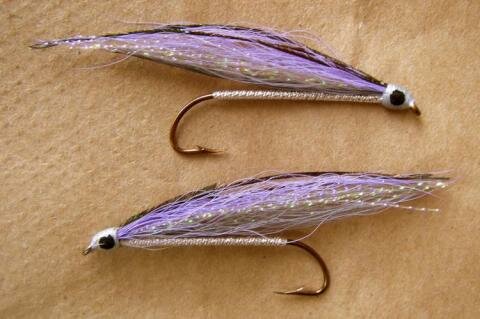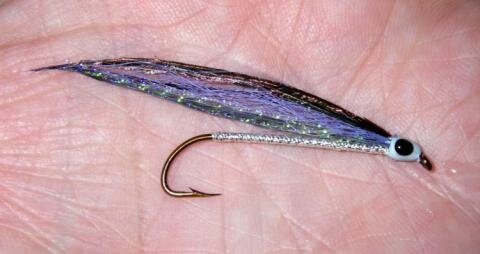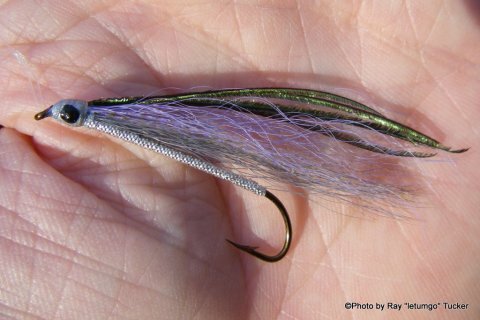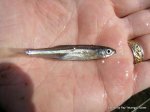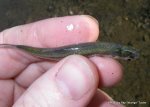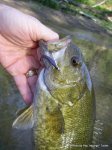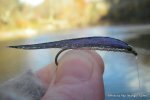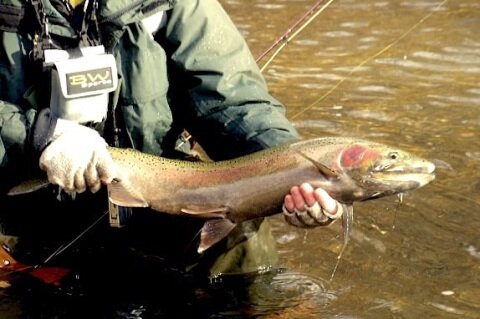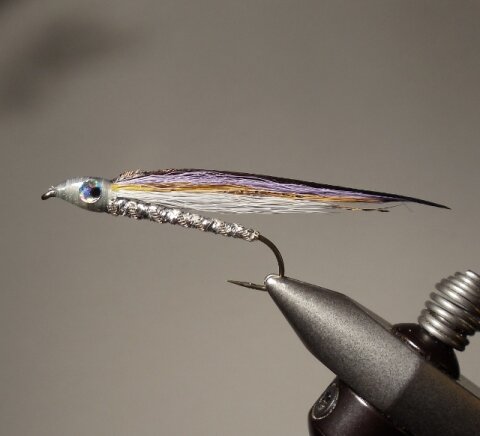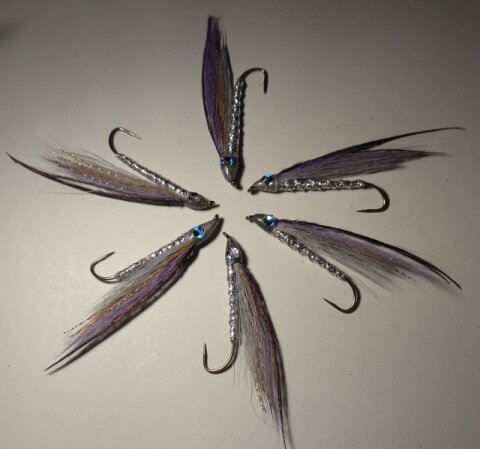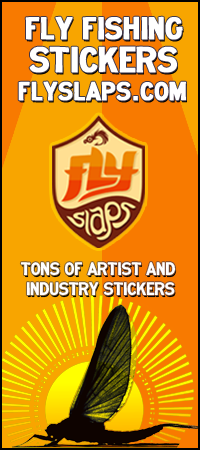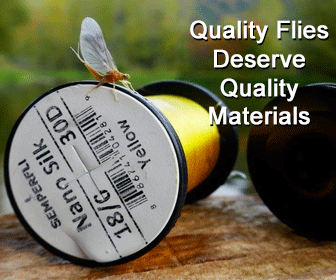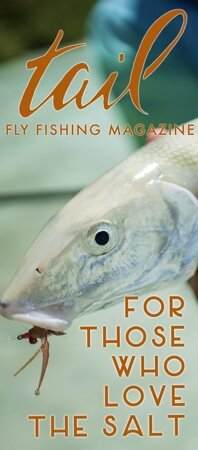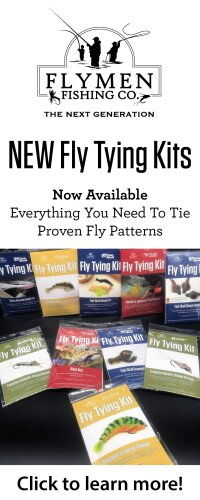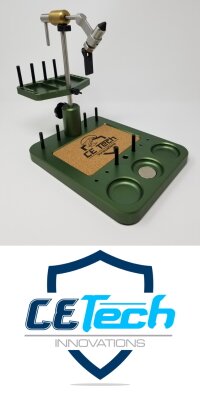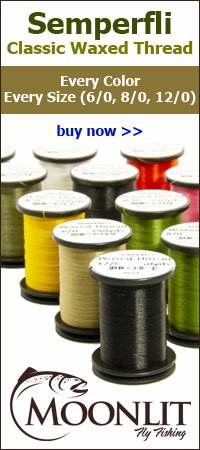BUCKEYE SHINER FLY PATTERN:
Hook – Mustad (Model 3665A/Size 6)
Thread – White UNI-Thread (6/0)
Body – UNI-French Embossed Silver Metal Tinsel (Size #12)
Rib (recommended) – Silver Oval Metal Tinsel
Wing 1 – Slate Gray Bucktail (Bottom layer)
Wing 2 – Two Strands of Bright Yellow Krystal Flash (folded over the tying thread to form four strands)
Wing 3 – Five Strands of UV Tan Krystal Flash (folded over the tying thread)
Wing 4 – Lavender Bucktail
Wing 5 – Four strands of Peacock Herl (Top layer)
Head – White tying thread painted with silver Testors model paint.
Pupils are formed with black acrylic craft paint. I painted the head with two coats of Sally Hansen’s Hard-As-Nails high gloss nail polish after the eyes had dried. The eyes kind of follow you around because the bulge out from the sides a bit. The thread head should be fairly big to make the eyes more prominent. The silver paint is Testors (the stuff that comes in the small square glass bottles and is used for painting plastic models) and the black eyes are painted with an acrylic craft paint (Apple Barrel Gloss 20662/Black). I think you can get them both at Walmart or at JoAnne Fabrics.
To shape the flies, I recommend running them under water to wet them after all of the tying steps are done, then let them air dry. That is why the shape of the bucktail wing is tapered. The wetting and drying process helps train the hair to keep a more tapered profile.
Tying Instructions: Materials are listed in the order they are attached to the hook.
Note – I recommend applying a coat of superglue to the body of the fly before wrapping the tinsel forward to make the body more durable. Another option is to shorten up the tinsel body somewhat (roughly 1/4 shorter) to keep the fishes teeth from cutting the tinsel body. A third option is to add an oval tinsel rib to reinforce the body to make the fly a tough.
Presentation Tips: Fish this pattern with a quick darting retrieve (like a scared shiner)
I designed this pattern to imitate the emerald shiners in Lake Erie tribs. I accidentally hooked an emerald shiner (Notropis Atherinoide) on a backcast one day. I stopped to take photos of the shiner, which later served as a color reference for tying. They are actually very pretty little fish. The Buckeye Shiner is a pattern I came up with to match this little shiner. The name should probably be “emerald shiner” but I didn’t want to cause confusion with other patterns already called that. The emerald shiner is sometimes called a “buckeye shiner”, so that is the source of the name.
As for the color scheme, the shiner I hooked had a prominent yellow streak along its side (thus the strands of yellow krystal flash) and it had a distinct lavender hue along the sides (I used UV Tan Krystal Flash to capture the color of the sides). The top and back had a iridescent green coloration (thus the strands of peacock herl). The eyes of the shiner are bright silver with large black pupils. I decided to use white tying thread and paint it silver before painting the pupils and finishing the head.
I put a fair amount of thought into this one to try to capture the key features of the natural shiner (at least from this area).
This pattern has proven to be very effective on smallmouth bass and steelhead.
Ray (letumgo) Tucker
As a bonus from Bill Shuck, here is a pattern similar that Bill tied after seeing Ray catch those steelhead. Bill said, “I came home determined to tie up some close equivalents for smallmouth as well as for steelhead and other trout. Here are the results, which are tied on 6x long Size #6 streamer hooks. As for my recipe, it’s basically the same as Ray’s except that I subbed gold Krystal Flash for the 2nd wing, yellow/brown bucktail for the 3rd wing, grey thread wraps for the head, and holographic stick-on eyes.”

